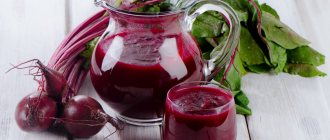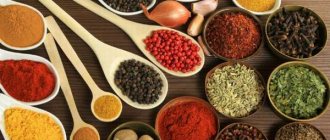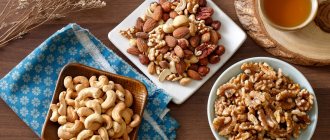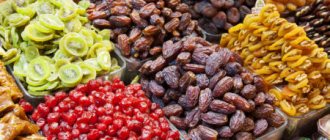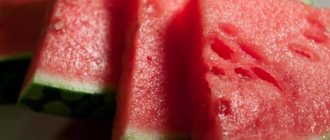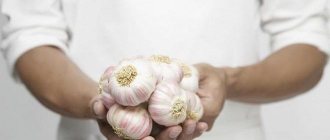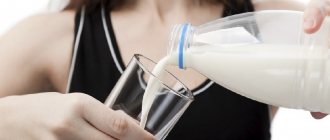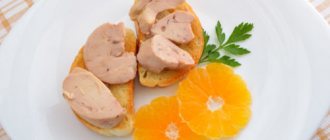Inflammation of the pancreas imposes on the patient the obligation to follow a diet: some fruits and berries are prohibited, some should be introduced into the diet with caution, following certain rules; this also applies to currants for pancreatitis. This berry has long been loved by everyone for its sweet and sour taste; it is used to make compote and jam, fruit jelly, often it is simply ground with sugar or added to various desserts and baked goods. The beneficial properties of currants strengthen the body's defenses and contribute to its recovery after inflammatory processes. In case of inflammation of the pancreas, nutritionists do not prohibit including this product in the diet, however, they strongly recommend listening to some advice that will allow you not to harm your health, but instead have a positive effect on the course of the disease.
Is it possible to eat currants for pancreatitis?
Currants are a real storehouse of vitamins and other useful substances; their concentration of vitamin C is especially high. One harvest of fresh berries can provide a person with the daily requirement of this component, which is very beneficial for strengthening the immune system. However, this berry is not only valuable for these properties: its regular consumption removes toxins and waste, relieves inflammation, has a choleretic and diuretic effect, lowers blood sugar levels, but the most important thing is that currants can prevent the formation of cancer cells.
Despite the wide range of positive qualities, you need to take the product into food with inflammation of the pancreas with skill. And there are a number of explanations for this.
Pancreatitis requires a selective attitude towards food. In conditions of the inflammatory process, the organ swells greatly, which is why bile stagnates in its ducts. The pancreatic enzymes necessary for the breakdown of food, for the production of which the pancreas is responsible, cannot normally enter the desired direction, that is, into the duodenum, and therefore, lingering in the pancreas itself, they begin the process of its digestion. As a result, the patient experiences acute pain in the abdomen, nausea, vomiting, dizziness, weakness, and bowel movements may also be disrupted.
The first emergency measures that need to be taken to relieve such symptoms are to ensure complete fasting. Hunger will not only reduce the manifestations of the disease, but also provide the rest of the pancreas necessary for its further recovery. Only after several days is it possible to eat easily digestible food, but still in minimal quantities. After a week, the diet can be expanded somewhat: more and more new dishes and products are gradually added to it, however, the emphasis is on food that does not create a load on the inflamed organ, but at the same time provides the body with valuable substances.
One such product that has a whole complex of vitamins and minerals is currants. During an exacerbation, of course, you cannot eat it, but at the stage of remission, the berry is allowed to be consumed in some form. However, even here one cannot do without limitations.
Firstly, the shell of the berries is quite dense; underneath it lies a lot of hard seeds, which are a potential mechanical irritant for the gastrointestinal mucosa. And, secondly, a high concentration of ascorbic acid affects the excessive acidity of the product, which is not entirely acceptable for inflammation of the pancreas. Currants should be consumed with extreme caution by those who have problems with bowel movements, and, frankly, constipation, since this berry has astringent properties.
A little later we will figure out in what form currants are allowed to be eaten and what can be prepared from them, but for now let’s talk about the benefits of the berry for human health.
Remission of pancreatitis: recipes with lingonberries
During remission, despite the stabilization of the condition, it is better to gradually return fresh berries to the menu. Decoctions, jelly, fruit drinks - pay attention mainly to them. Their regular use can minimize the risk of relapse. Introduce fresh berries little by little, literally one piece per day, doubling the portion every other day. If the pain syndrome does not manifest itself, then you can safely increase the volume to 0.5 cups - this is approximately 150 grams. berries
We invite you to familiarize yourself with detailed recipes for making tea and lingonberry infusion:
- For tea you will need dry lingonberry leaves, which can be purchased at a pharmacy, and green tea. Mix the components in a one-to-one ratio, after grinding the leaves to the size of tea leaves. From the resulting mass, take 2 tablespoons, putting the rest in a bag or jar for next time. Pour a glass of boiling water. Wait 15 minutes, after which strain. Add sugar substitute or honey to taste.
- To prepare the decoction, first pour a glass of boiled water over the crushed lingonberry leaves. Bring to a boil over low heat, cook for about 10-15 minutes. Strain the drink. It is recommended to drink one tablespoon. three times a day.
Make your own lingonberry juice. Homemade, unlike store-bought, is healthier, because you won’t stuff it with flavorings, preservatives and additives. Juice prepared at home can be made sweeter by adding a little honey. If you like to drink tea, why not give yourself a delicious gift - some lingonberry jam or preserves? But give up baked goods, this is heavy food that will aggravate the problem.
Many forest berries (cranberries, lingonberries, blueberries, strawberries), due to their healing qualities, are widely used in traditional and folk medicine to treat various diseases. Treatment of pancreatic diseases requires adherence to a special diet that excludes the consumption of sour berries. Despite its sour taste, cranberries for pancreatitis can be added to the diet after mandatory consultation with your doctor.
What are the benefits of currant berries for the body?
The value of currants is determined, first of all, by its composition, which is replete with the following beneficial substances:
- Vitamins: A, E, H, K, PP, almost all representatives of group B, as well as vitamin C, the content of which is especially high,
- Microelements: iron, manganese, zinc, cobalt, fluorine, copper, boron, iodine, molybdenum,
- Macroelements: potassium, magnesium, calcium, chlorine, phosphorus, sulfur,
- Simple carbohydrates (glucose and fructose), as well as complex carbohydrates (plant fiber),
- Anthocyanins,
- Pectins,
- Coumarins,
- Organic acids: malic, ascorbic, succinic.
Thanks to a wide range of components necessary for the body, currants have the following health benefits:
- Strengthens immunity,
- Helps resist viral and bacterial infections,
- Promotes rapid restoration of damaged tissues,
- Has an antioxidant effect: rejuvenates the body,
- Prevents the formation of malignant cells,
- Relieves inflammation of the mucous membranes of the gastrointestinal tract,
- Removes toxins and toxic substances,
- Lowers cholesterol, thereby preventing the formation of atherosclerotic plaques in the arteries,
- Acts as an excellent prevention of heart attacks and strokes due to its ability to thin the blood,
- Strengthens the peristalsis of the digestive system, providing a choleretic effect and relieving constipation,
- Increases appetite
- Reduces the feeling of nausea.
Blueberries for diarrhea in folk medicine
This berry is not only tasty, but also very beneficial for the human body. The beneficial properties are explained by its composition. It has medicinal properties, so it is often used in folk medicine in the treatment and prevention of various gastrointestinal problems. It can be used in the form of jelly, decoction or simply dried berries.
Healing properties and composition
Blueberries contain a large amount of minerals and vitamins that are beneficial for the body in the fight against diarrhea.
This includes:
- water;
- organic acids;
- alimentary fiber;
- carbohydrates;
- potassium;
- sodium;
- phosphorus;
- calcium;
- iron;
- copper;
- vitamin C;
- RR;
- R;
- AT 6;
- IN 1;
- pantothenic acid.
The medicinal properties of the fruit are that they contain the correct ratio of vitamins and tannins. Iron, copper, magnesium, which have antibacterial, vascular-strengthening and antianemic properties - this gives the berry the ability to heal the intestines.
Due to the content of gallic acid and hydroquinone, blueberries have astringent properties. It also contains antispasmodic substances: quercetin, potassium, rutin, caffeic acid and geraniol.
By combining malic acid, quercetin and gallic acid, blueberries have bacteriological properties that can stop the growth of pathogenic bacteria in the intestines.
How to harvest fruits to combat diarrhea
There is nothing complicated about choosing and preparing blueberries correctly. Preparation is an excellent remedy, if your family often suffers from diarrhea, you can prepare a decoction or jelly from pre-prepared dried flowers. Tea is also a great solution. First you need to choose only dry, even and smooth fruits. Berries that are soft and wet will spoil very quickly.
When buying fruits in a store, you need to pay attention to their color; if it is light, pinkish and pale, then the berry is unripe and was picked earlier than expected. A beautiful waxy coating on the berry indicates that it is fresh and was delivered to the counter through proper transportation. The berry should be smooth and sweet.
You can also harvest leaves. They need to be collected around May - June - this is their flowering period. You need to carefully cut the leaves with scissors and dry them.
Berries can also be dried. For drying, they need to be collected during ripening in July - August. You should choose only ripe and smooth berries. You can dry them outdoors or in a special food dryer.
Dried berries and leaves should be stored in paper bags, bags or boxes. Their shelf life is up to 2 years.
Blueberries are an excellent solution for digestive problems.
Folk treatment with blueberries for disorders is an effective remedy that helps fight even the most serious diseases that can cause diarrhea.
The fruits are used in the treatment of digestive problems:
- In case of disorders and diarrhea, due to its astringent properties, the fruits help restore stool. The decoction will perfectly help solve a delicate problem.
- For indigestion, if you have prolonged disorders, as well as gas and heartburn, blueberries, which have tonic and gastroprotective properties, help normalize digestion and eliminate bloating.
- Intestinal diseases that are inflammatory in nature, if foreign microorganisms live in the intestines, they can provoke putrefactive and fermentative processes - this entails the appearance of diarrhea. Thanks to its bacteriostatic and anti-inflammatory properties, blueberries help eliminate the problem.
- For gastroenteritis, blueberries help relieve diarrhea, vomiting and intestinal cramps.
- For pancreatitis, berries are great for loose stools.
Recommendations: how to prepare and use berries for diarrhea
Folk treatment with blueberries is a common method that can not only remove uncomfortable symptoms, but also cure the problem itself. The main thing is that the berries are safe for the body, so they can be used by both adults and children.
Let's look at the most popular recipes using wild berries to treat diarrhea.
Fresh medicinal berries
Using fresh blueberries is considered the most beneficial; they can be used in the treatment of loose stools. Thanks to its astringent and anti-inflammatory properties, the healing berry can relieve you of discomfort. You need to take 3 pieces of small berries and chew them thoroughly.
You can also take 2 tsp. Mash fresh fruits and pour 1 cup of boiling water. Pour the mixture into a jar, wrap it up and leave for 5 hours. Take 4 times a day.
Dried blueberries
Dried fruits are a storehouse of pectin and tanning enzymes, which cope very well with intestinal upset.
As a rule, parents use dried flowers to treat digestion in children. When should you start introducing blueberries to children? You can start giving it as early as 7 months, adding its small berries to juices, teas or purees. A small child should not be given whole berries; they need to be well mixed.
It is forbidden to give blueberries to children who have problems with bowel movements (frequent constipation). A child who is over 1 year old can consume approximately 1 glass of blueberries per day.
After the age of three, you can eat 2 glasses a day - this is if the child has no contraindications: allergies or individual sensitivity to the composition of the berry.
Children can be given dry fruits to chew in small portions about 6 times a day. For an effective result, the fruits must be chewed thoroughly and then held in the mouth before swallowing.
Sometimes, if the child is small, you can make blueberry tea and simply introduce it into the child’s drinking diet. You need to take 0.5 liters of sterile water and add 5 tsp. dried flowers, put on the stove and bring to a boil. Once the mixture boils, cook for another 15 minutes. After preparation, the tea is filtered well and given to children to drink 3 times a day, 1 cup.
Decoction
A decoction is an effective folk remedy that helps with gastrointestinal diseases and loose stools.
There is nothing complicated in preparing a blueberry-based decoction. You need to take 50 grams of dried flowers and pour 300 ml. sterile water, put on low heat and cook for about half an hour. At the end of cooking, the broth should be strained. You need to drink it 3 times a day, ½ cup.
Another decoction recipe is this: take 1 tbsp. l. dried flowers and pour 2 cups of boiling water, place in a water bath and steam until the mixture is reduced in volume by half. You need to drink it warm before meals about 4 times a day.
Infusion
You need to take 2 tsp. dried flowers, pour 1 cup of boiling water, wrap and leave for 3 hours. After cooking, you need to drink it in equal proportions throughout the day.
You can also take 4 tsp. dry leaves, pour 2 cups of boiling water, pour the mixture into a thermos and leave for 5 hours. Take 5 times a day before meals.
Blueberry jelly for diarrhea
Kissel is an excellent folk remedy for diarrhea that has been used for decades. Its benefit is that it contains methionine, lecithin, lysine and choline - these are amino acids useful for the human body. Also vitamins B, A and PP.
Frustration and loose stools can cause dehydration. In this case, you need to stick to a diet, exclude heavy, fried, salty and sweet foods.
You need to eat in a way that is safe for the body, but at the same time healthy. Blueberry jelly should be included in the treatment menu - it is a light and at the same time nutritious folk remedy.
It should be used 2 times a day in small portions.
How does jelly help with loose stools? To prepare jelly, starch is used, which is a sorbent. It absorbs all heavy and harmful toxic substances. Kissel gently envelops the intestinal mucosa and has soothing properties.
Prepare blueberry jelly like this: take a saucepan, pour 2.5 liters of sterile water into it and bring to a boil. Then add 200 grams of dried flowers and the same amount of sugar.
Cook over medium heat for about 20 minutes. After the specified time, add 4 tbsp to the mixture. l. starch. You need to pour it in slowly and immediately stir the mixture with a whisk.
After this, cook for 5 minutes, remove from the plait and cool.
Kissel for children is prepared in the same way, only instead of granulated sugar you can add sugar syrup.
Do blueberries have side effects?
When blueberries are used in the correct therapeutic doses, they will not cause side effects and will not become toxic to the body.
As a rule, blueberry leaves cannot be used for a long time.
The leaves contain hydroquinone and arbutin; if the dose exceeds the norm or the treatment lasts long enough, the blueberry becomes a toxic substance, and this can lead to sudden weight loss and gastrointestinal problems.
The dose should not exceed 10 grams of leaves per 1 liter of liquid. It cannot be used for a long time, and it is recommended to alternate with other plants.
Contraindications for use
Like any other medicinal plant, blueberries have contraindications.
When blueberries are contraindicated:
- for problems with the functioning of the biliary tract;
- increased stomach acidity;
- urolithiasis disease;
- individual intolerance;
- diseases of the pancreas;
- allergies;
- patients with oxalaturia (excretion of salts in the urine).
Blueberries should be treated wisely; if they are overused, constipation may occur, which will lead to other serious gastrointestinal diseases.
So we figured out that blueberries for diarrhea are an old folk remedy that will help you delicately cope with loose stools. The advantage of the berries is that they can be used for treatment in both adults and children.
We wish you to always be healthy and happy!
Source: https://ponosa.net/lechenie-diarei/chernika-pri-ponose-v-narodnoy-meditsine.html
Damage from currants
Like any other product, currants are characterized by both positive and negative qualities, which can negatively affect the patient’s well-being and significantly worsen his condition. With pancreatitis, it is especially important to provide gentle nutrition, which will not put an unnecessary burden on the damaged organ; however, currants do not quite meet this criterion.
Since the berry is very acidic, it irritates the mucous membranes of the digestive tract, and therefore consuming it in its whole fresh form is strictly prohibited, especially if there is a problem such as gastritis in parallel with pancreatitis. Experts strongly recommend not to eat this product during the acute phase or during an exacerbation, otherwise the consequences may be very unfavorable.
In addition to the fact that the berry has high acidity, there are a number of other features due to which the product is introduced into the patient’s diet with extreme caution:
- Thick skin and a fairly large number of hard seeds can damage the mucous membranes of the gastrointestinal tract, in addition, this is rough food that is difficult to digest and requires intensive work of the pancreas to carry out this process,
- The fastening effect that the berry has can become a serious cause of constipation, and for people already suffering from this problem, this circumstance can become a real disaster,
- Currants are a strong allergen, so for those who are individually intolerant to them, they can provoke a severe allergic reaction.
Black currant
There are two varieties of currants: black and red. Black berries are not excluded from the patient’s menu, however, they should be consumed in a limited form and only as part of certain dishes. If you have symptoms such as pain, nausea, diarrhea, or even vomiting, consuming currants is strictly prohibited.
Acute stage of the disease
During the period of exacerbation of the disease, neither berries nor any other foods are allowed. The patient is forced to fast for 2-3 days so that the pancreas can rest and recover. At this stage, it is permissible to take only drinking water or decoctions of medicinal plants, for example, chamomile or rose hips. After the specified period, after the symptoms begin to gradually decrease, it is allowed to gradually introduce easily digestible food, which does not require the damaged pancreas to work hard and produce a large amount of pancreatic enzymes.
However, currants are not included in this list. Its seeds and peel, on the contrary, are rough food that can become not only a mechanical irritant for the gastrointestinal tract, but also a source of increased levels of acid, which is extremely undesirable for the pancreas. The plant fiber contained in the berry often provokes increased pain, nausea and gas formation, which only worsens the patient’s well-being. But the most dangerous thing that consuming black currants can lead to in the acute phase is pancreatic necrosis, an inflammatory process of the pancreas, accompanied by the death of its tissue. This circumstance poses a serious threat to the patient’s life, and therefore requires immediate surgical intervention.
Chronic pancreatitis
Remission of the disease opens up a little more possibilities: despite the fact that whole berries are still prohibited, it is allowed to cook compotes and jelly based on currants, prepare fruit jelly, puddings and mousses. The permissible daily portion of currant compote is 400 ml, which is 1-2 standard glasses, however, the berries present in it cannot be eaten: although they have undergone a heat treatment process, their skin retains its density even after boiling, and the berry seeds.
In order to prepare a compote or fruit drink using currants, the berries must be thoroughly mashed or chopped using a blender. The resulting mass must be washed and strained, separating it from solid particles; this can be done using a strainer.
It is strictly forbidden to drink the juice obtained by squeezing black currants in its pure form, since its acid concentration is too high. It can only be used for preparing drinks or berry desserts: puddings, mousses, jellies. An interesting flavor combination is obtained when using currant juice as a gravy for meat. In the absence of diabetes mellitus, it is allowed to eat currant jam or syrups made from this berry. It is best not to overuse this delicacy, but add only a few teaspoons of it to your tea.
Recipes for healthy dishes and drinks made from lingonberries
Lingonberry leaves are used for pancreatitis to prepare decoctions. They can be drunk within two weeks after the acute symptoms of the disease have subsided. This drink has a powerful anti-inflammatory, antibacterial, healing effect, which will help quickly restore the health and functioning of the pancreas.
You can make jelly, compote, fruit drink, and jam from lingonberries.
Decoction of leaves
To prepare a decoction of lingonberry leaves, place a tablespoon of the raw material in an enamel container and pour a cup of boiling water over it. Then put the drink in a water bath and hold for 15 minutes, without bringing to a boil. After the specified time has passed, remove the drink from the water bath, strain through cheesecloth, and add boiled water to a volume of 250 ml. The drink can only be drunk warm.
Decoction of berries and leaves
For chronic pancreatitis, as well as at the stage of remission, not only leaves, but also berries can be used to prepare a decoction. A tablespoon of berries and a tablespoon of leaves are poured into a liter of water, the container is placed in a water bath - heated for 20 minutes, without bringing to a boil. Afterwards, strain the broth, add boiled water to a volume of 1 liter and cool slightly.
There are a lot of rumors about whether lingonberries can be used for pancreatitis..
The time has come to put everything in its place and finally figure out where is fiction and where is the truth. What medicinal properties does the berry have? What is the daily dose of lingonberry consumption during the acute phase of the disease. How many berries can you eat if pancreatitis has entered the stage of stable remission? We will answer these and many other questions, and also share healing recipes with lingonberries to make your menu nourishing, varied and healthy.
Red Ribes
The red berry is in no way inferior to black currant in its beneficial properties. It is rich in coumarins, compounds that reduce blood clotting and prevent the development of malignant tumors. Ascorbic acid, which is part of red currants, helps increase the body's defenses, and vitamins A and P strengthen the walls of blood vessels, which has a beneficial effect on health in the presence of problems with the cardiovascular system. B vitamins improve the condition of hair and nails, iodine becomes an excellent helper for reduced thyroid function. In fact, the product contains a lot of useful components, and one way or another, due to them, the berry normalizes the patient’s condition, providing a general healing effect on his body.
It is as follows:
- Facilitating the functioning of the gallbladder and liver,
- Cleansing from salts, waste and toxins,
- Prevention of vitamin deficiency,
- Improving the functioning of the gastrointestinal tract,
- Resistance to infections,
- Improved appetite.
Permission or prohibition to eat this product directly depends on the stage at which the disease occurs.
Berries for acute pancreatitis
Just as in the case of black currants, red berries are prohibited from being consumed during the acute phase and during the period of exacerbation. The choleretic property that they possess will serve as a serious aggravating factor not only for pancreatitis, but also in the presence of diseases such as cholecystitis or cholelithiasis.
Increased production of hepatic secretion and intensive removal of its excessive volumes from the gallbladder cause the onset of stone movement in cholelithiasis. In the case when these stones are large, they get stuck in the narrowed duct, becoming the root cause of biliary colic or obstructive jaundice, quite severe pathological conditions, accompanied by their own unpleasant symptoms.
Also, a high bile content stimulates the production of pancreatic enzymes, which, in conditions of inflammation of the pancreas and impaired outflow of fermentation from it, simply leads to self-digestion of the organ.
Stage of remission of the disease
With the beginning of the disappearance of acute symptoms and the achievement of a good stable condition of the patient, which occurs approximately from the 3rd week after an attack of pancreatitis, red currants can be introduced into the diet. The best option is to prepare compote, fruit juice, desserts in the form of puddings and jellies or any other dishes from berries. It is not allowed to eat red currants in their pure form; concentrated juice from these berries is also prohibited. An increased acid content in them, as a rule, leads to an exacerbation of the disease and the re-emergence of a whole bunch of unpleasant symptoms in the patient: acute pain in the abdomen, nausea and vomiting, flatulence and diarrhea.
Pickled lingonberry recipe
Soaked lingonberries are an old Russian method of preparing berries for the winter. It is served at the table along with meat and fish dishes, and added to vinaigrette and other salads. To prepare soaked lingonberries you will need 1 kg of berries, 1.5 cups of sugar and water. Cooking steps:
- Sort through the lingonberries, remove debris, and rinse thoroughly.
- Place the berries in a glass jar.
- Mix water and sugar in a saucepan and prepare sugar syrup (cook the mixture over low heat until the granulated sugar is completely dissolved).
- Pour the syrup over the lingonberries and close the jar.
- Such preparations can be stored in a cool, dark place for 2 years.
Cranberries and lingonberries are extremely healthy berries, from which a variety of refreshing healing drinks, sweet desserts and even sauces are prepared. In order to introduce these berries into the diet, it is necessary to consult with your doctor, who will determine the stage of pancreatitis, based on the patient’s complaints, examination data, and the results of laboratory and instrumental studies. You can use cranberries and lingonberries for cooking only at the stage of stable long-term remission.
Bibliography
- Gorbatyuk N.O., Chernikov M.V., Terekhov A.Yu. Studying the activity of the sum of triterpene acids from sea buckthorn and cranberry fruits on a model of chronic inflammation. Bulletin of new medical technologies 2015 No. 2 pp. 85–87.
- Gorbatyuk N.O., Chernikov M.V., Terekhov A.Yu., Mashirova S.Yu. Study of the effect of the sum of triterpene acids of sea buckthorn and cranberry on lipolysis in the adipose tissue of laboratory animals during a course of administration. Basic Research 2020 No. 2–19 pp. 4231–4234.
- Nikolaeva Yu.N. Berries, fruits and juices. Useful properties and the best folk recipes. Publishing house Ripol Classic 2012
- Martynov S.M. “Vegetables + fruits + berries = health.” publishing house Enlightenment, 1993, pp. 98–116.
- Ponichuk A.A. Berries for your health: from A to Z. Phoenix Publishing, 2004, pp. 56–76.
- Rogov V.I. Health Without Drugs 2004 pp. 310–363.
- Slavgorodskaya L.N. Berries are healers. Phoenix Publishing 2004 pp. 172–201.
Pancreatitis is a disease characterized by inflammation in the pancreas, leading to disruption of its functioning. The main purpose of this organ is to produce pancreatic juice, which is necessary for the digestion of food, and therefore with pancreatitis, first of all, the digestion process is disrupted.
A fairly common plant used for health purposes when diagnosed with pancreatitis is lingonberry. The fruits of this berry, which have a sweetish-sour tart taste, contain many useful components: vitamin C, tannins, glycosides arbutin, carotene, vaccinin, organic acids (citric, oxalic, acetic, benzoic, malic). Together, they all determine the healing properties that are inherent in lingonberry berries and bush leaves.
Lingonberries for pancreatitis promote the absorption of food without overloading the pancreas. In addition, they control the production of gastric juice, which is so important during the inflammatory process. When pancreatitis is diagnosed, it is recommended to prepare decoctions from lingonberry leaves, which must be consumed during the day during the period of exacerbation of the disease.
Patients with pancreatitis can eat lingonberries without any restrictions, as they have a mild effect on the digestive system. Among other things, lingonberries can cleanse the pancreas, thereby improving its functioning. It is useful to prepare jelly from berries, cook compote and make juice.
In what form can currants be eaten by sick people?
In order not to harm the body, you need to know a few simple rules, the observance of which will allow you to avoid the development of various complications of the disease.
- It is not recommended to consume fresh whole berries, however, during a long stage of remission, that is, after at least a year and provided that the patient has no complaints, the product can be eaten in this form, but in limited quantities. One way or another, the currants must be chopped, they must be boiled, the most convenient option is to use the berries that were used to prepare the compote. Heat treatment allows you to soften coarse plant fiber. Also, such measures help to neutralize the aggressive natural acid contained in large quantities in currants. The maximum permissible daily portion of berries should not exceed 50 g.
- Freshly squeezed juice is especially beneficial. It does not contain particles of berry shells and seeds, which are difficult to digest by the digestive system. It is not difficult to obtain such a product: just wipe and then squeeze fresh berries, after which the resulting liquid is filtered through cheesecloth. Since the product is a strong concentrate when undiluted, drinking it neat is strictly prohibited. It is best to dilute it half and half with water or in a ratio of 1:3. An excellent alternative would be adding currant juice to tea or preparing fruit drinks, compote, jelly, and desserts based on it.
- Currant jam will be a tasty treat. However, it is only permissible if the patient does not suffer from diabetes or obesity. It is necessary to introduce jam into the diet only at the stage of remission and in small quantities. You should not eat it with spoons; just add 10 g of this product to tea or any other drinks.
- The most interesting option is to use currant juice as a gravy for meat dishes. The benefits of dietary meat will only increase thanks to this addition.
- You can make various desserts from red or black currant berries: homemade marmalade, jelly, mousses. Using currant jam, you will get wonderful sweet dishes that are ideal for serving as a second breakfast or afternoon snack.
- To make drinks or desserts, it is best to buy only fresh berries. It is preferable to eat currants that were grown independently. If this is not possible, when purchasing, pay close attention to the condition of the product: there should be no cracks, mucus, or even traces of mold on the berries. Not only pure, but also ripe currants are welcome.
One way or another, before using this product, you must consult a specialist and obtain appropriate permission from him. Remember that acute pancreatitis or cholecystitis, cholelithiasis, diabetes mellitus, and a tendency to bleed are all circumstances that prohibit eating this berry.
Medicinal properties: why are lingonberries so useful?
Fruit drink, mousse, jelly, jam, etc. – there are so many things you can make from lingonberries! But these berries are also added to desserts, be it cottage cheese, ice cream, yogurt or cake. The taste properties of sweet and sour lingonberries are not inferior to their beneficial qualities.
- Lingonberry has a pronounced anti-inflammatory effect;
- Has the ability to remove toxins from the body;
- Eating these berries has been proven to lower blood pressure;
- Lingonberry tones, invigorates and improves overall health;
- Berries improve appetite and have a beneficial effect on the functioning of the digestive system;
- This is a storehouse of vitamins A and ascorbic acid, which act as a preventive measure for hypovitaminosis;
- Lingonberry and its derivatives (leaves, fresh and dry berries) have high antimicrobial activity, due to which it is prescribed for dysbiosis, intestinal and urinary tract infections. It successfully fights E. coli, staphylococci and streptococci.
In case of inflammation of the pancreas, patients are prescribed a strict diet. The list of acceptable products is quite modest, but lingonberries for pancreatitis are one of the few berries that are allowed for consumption. However, for eating it to be beneficial, you need to know when to stop and follow some simple rules.
Doctors' advice
Combining the above information, we will name and list the main recommendations of experts regarding the use of both black and red currants:
- It is forbidden to eat the product in its pure form,
- Occasionally, after achieving long-term remission, it is allowed to eat boiled berries,
- You cannot drink concentrated freshly squeezed juice, it can only be used to make drinks; if the disease has not bothered you for more than a year, then currant juice can be diluted in half with water and drunk in this form, but in limited quantities,
- When using currants to prepare compote or fruit juice, you need to grind them thoroughly, and why pass them through cheesecloth in order to get rid of the hard berry shell and seeds?
- It is recommended to give preference to fresh and not frozen berries,
- Currants are prohibited for those people who have contraindications to its consumption,
- The permissible daily portion of currant compote should not exceed 400 ml; as for desserts based on berries, they can be consumed in an amount of 100 g.
Any dish prepared with currants should be introduced gradually, starting with a small amount and gradually increasing its volume. Each time you need to monitor your body’s reaction: whether pain occurs in the abdominal area, whether nausea or vomiting occurs, or whether there are any changes in stool. In case of any deterioration in health, the product should be immediately excluded from the diet and further consult on this issue with your doctor.
Healing recipes based on lingonberries
- Use in its pure form: in a volume of 1 tbsp. l. Take lingonberries three times a day for a week.
- Infusion of rose hips and lingonberries. Take equal parts of rose hips and lingonberries. Brew the mixture (1 tbsp) with boiling water (1 tbsp) and let it brew, wrapped in a warm cloth. Take 0.5 cups three times a day.
- Decoction. Pour crushed lingonberry leaves (1 tbsp) with water (1 tbsp) and cook for 10 minutes, cool, and then strain through cheesecloth. Take 4 times a day in a volume of 1 tbsp. l.
- Lingonberry tea. Mix crushed lingonberry leaves (2 tsp) with green tea (1 tsp) and pour boiling water (200 ml) over the resulting mixture (2 tsp). Leave for 10 minutes. Drink with added sugar or honey.
- Lingonberry kvass. Sort and wash lingonberries (1 kg), then mash well and squeeze out the juice. Pour the resulting pulp with water (5 l) and boil for 2 minutes. Next, cool the broth, strain and dissolve sugar (1 tbsp) and honey (100 g) in it. Add squeezed juice, zest of 2 lemons and yeast (15 g) to the broth. Leave to ferment for 15 hours in a warm place. Cool the kvass, strain and put in the refrigerator.
These are simple recipes, but thanks to the healing properties of lingonberries, they can easily help cure such a serious disease as pancreatitis.
In addition, from this wonderful berry, which has a sweet and sour taste, delicious drinks, fruit drinks and compotes are prepared, and it is also added to dishes when serving or preparing them. By the way, lingonberries make excellent sauces that go well with meat dishes.
It is also used in the treatment of urinary tract infections, dysbiosis and intestinal infections, as it has an excellent antimicrobial effect. And pathogenic microorganisms such as staphylococci, streptococci and E. coli cannot survive in the conditions that this berry creates when it enters the body.
But is it as useful for pancreatitis? And in what form can it be used during periods of exacerbation and remission?
Reviews
Dear readers, your opinion is very important to us - therefore, we will be happy to provide feedback on the use of currants for pancreatitis in the comments, this will also be useful to other users of the site.
Olga
In the summer we always stock up on this berry, and then we cook compotes from it all winter. This is the best remedy for colds and viruses, because currants contain a lot of vitamin C. By the way, my pancreatitis has never worsened while drinking this drink, which means that the body absorbs the berries well.
Evgeniya
For me, my illness is not a hindrance. I eat not only healthy, but also tasty. You just don't need to be lazy, that's all. I prepare various desserts, always look for some interesting recipes, and then start home experiments. I made mousse, pudding, fruit jelly. The children also eat these delicacies with me. And it seems to me that they are even more pleased than I am.


